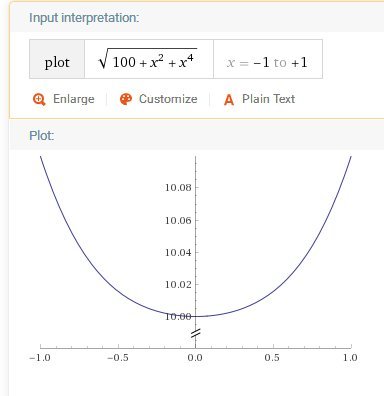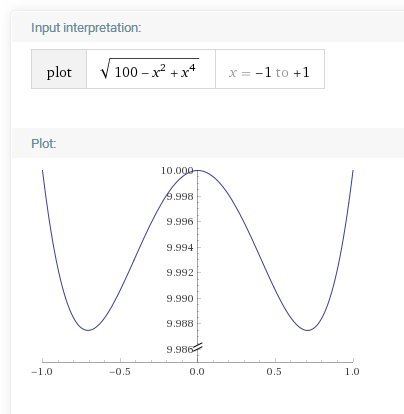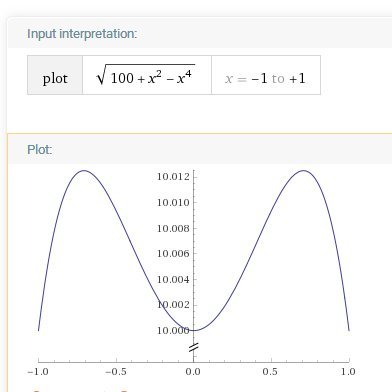-
Posts
18314 -
Joined
-
Last visited
-
Days Won
104
Content Type
Profiles
Forums
Events
Everything posted by studiot
-
A metric is not a rquirement for a geometry either. For example whilst a metric is required for a congruence relation, it is not required for a similarity relation, though it has its uses if there is one.
-
similar triangles. Hint draw a diagram showing what countryboy did.
-
I don't think so, 'The' is called the definite article as opposed to 'a' which is the indefinite article Most languagues do not make this distinction, or if they did it has fallen out of use But it is a useful distinction to make. Furthermore there is 'the and 'a' are the same for all genders.
-
Most English speakers find learning all the Der Die Das in German or le la les in French to be a pain. I know I did. This article, along with many showing different opinions on the web, shows how far ahead common usage is of academic classification. https://classics.osu.edu/Undergraduate-Studies/Latin-Program/Grammar/Cases/English-Case Until today I had never heard of an instrumental case. But I was taught the ablative in school.
-
Sadly since you are not listening to the bulk of what is said to you, there is no point saying any more.
-
You are ignoring Dr Swanson's reply from a much earlier post when you asked this question before. However I'm glad to se you finally have your plots the right way up to talk about oscillators. Do you know what equilibrium means and how it is important to any oscillator?
-
Ok you have corretly identified that answers A and B are incorrect since they link activation energy to the energy levels of products or reactants. C is correct the activation energy is quite independent of these energy levels. I see the reaction is stated to be exothermic, note this also applies to endothermic reactions. You may also find the following of interest in the light of this comment. This is a chemistry question and you should know that Chemists use a different sign convention from Physicists for the first Law of Thermodynamics. Basically Chemists regards any form of energy out as negative and any form of energy in as positive. This includes work. So if the energy level of the products is lower than that of the reactions the energy equation gives (Eproducts - E reactants ) as being negative. However the term 'exothermic reaction' refers specifically to the production of heat, not total energy ie not including other forms such as light, sound or work. The clue is in the 'thermic'. Similarly an endothermic reaction specifically consumes heat.
-
You completely misunderstood Dr Swanson's comment. I suggest you mug up on the difference between energy and power since MeV is a unit of energy, not power. http://www.differencebetween.net/science/difference-between-energy-and-power/
-
So what about the other questions? You need to know the answers to all of them and more to fully understand how any (repeat any) oscillator works. This is why is is common to start by studying the simple harmonic oscillator, which is very easy. I use MathCad, Excel, Geogebra and others. But the plots came from wolframalpha, which is a free maths site and very useful. https://www.wolframalpha.com/ Just type plot y = ....... into the input box and sit back.
-
So to use velocity as an example. Is the velocity the same (ie constant) throughout the cycle? Is the velocity ever zero ? Is there a maximum velocity? Is the velocity continuous ie are there any jumps or sudden changes ? If the answers to any of these questions is yes then at what point in the cycle does this happen? and so on. Similar questions can be applied to acceleration and position or displacement.
-
Instead of trying to force Physics to conform to your own ideas how about we try something different, because you will not succeed. You want an oscillator. Can you list the what happens to the velocity, acceleration and position of any oscillator as it runs through one complete cycle?
-
This multiple choice question must be homework. What have you done so far? Can you at least identify any of the answers that are definitely wrong and say why?
-
If there was a BB was a controvertial subject a few decades ago. #and there were ( perhaps still are) plenty of other hypotheses to go round.
-
As you know I am not a cosmologist and I cna't answer this question, even if they think they can, though in my lifetime I have seen their answer change many times. It might and then again it might not. It depends upon the new and old configurations. Don't forget I am simply pointing out for instance that in Newtonion Mechanics there are an infinite number of configurations of a given system with some property the same, eg moment of inertia. If configuration is important in mass/energy (eg potential energy) then this is also true of such systems.
-
Having a metric is not an essential requirement for topological spaces. If a topological space has a metric it is a metric topological space. This is important because there is no requirement to measure the 'length' of the sticks in a topological network of connected sticks. The connectivity is all important in determining precedence or causality. So I maintain it would just be different, although topologically equivalent. I do agree that if you restrict the use of 'spacetime' to Minkowski (who coined the word after all) then it would not necessarily be spacetime. Note also that in the first millenium and a half before coordinate systems were invented Geometry functioned perfectly well. In fact the introduction of coordinate systems, principally by Descartes, introduced extra information into Geometry which was not present before. This extra information is that everything now has an orientation. Before an equilateral triangle was the same whichever way up it presented. Whereas the same triangle standing on a vertex or a base are considered to be different different. The issue then becomes is this redundant or required information ? There is a move in modern Geometry to return to the pre Descartes era.
-
One consequence of moving from a distributed system of point masses to a Field where configuration of the participants plays a part is the need to move also to a mass density function. where contributions from the participants is summed. The more so for nonlinear equations. In these circumstances you cannot simply say that if you move a 'mass' at point A to another point B the total mass will remain the same or that the effect on the rest of the system of this mass will be the same at point B as it is at point A, because of the reconfiguration of the system. This is similar to the move to a charge/current density function as opposed to simply charge/current in electrodynamic theory, where J is taking over from I as the basic electric 'dimension'. And yes, as always, boundary conditions are all important.
-
Swansont has a superb 'feel' for how things interact. the neutral point is called a lagrangian point and whilst I'm sure you can google this and get lots of pretty pictures you get a feel by looking at some calculations as here https://iwant2study.org/lookangejss/02_newtonianmechanics_7gravity/YJC2016 H2 Phy Topic 7 G field - Tutorial (Teacher).pdf
-
You are not plotting the described function it looks nothing like your cusp. Here are plots with a and b both positive, a negative be positive, b negative and a positive.
-
Because the curvature of the two yellow lines you have drawn are opposite, the cusp they form must pass through a vertical line whcih goes to negative infinity. This line is at x = 0 which is why I said the velocity there is infinite.
-
How is this possible without an underlying coordinate system ? I can't agree with this since the sticks (intervals) have a clearly defined measure. And clearly there exists a stick between each pair of events in the set. Even if the set includes every number in [math]\Re \otimes \Re \otimes \Re \otimes \Re [/math]
-
Despite the middle paragraph of the Wiki quote? here is the full reference. https://en.wikipedia.org/wiki/ADM_formalism I also don't see how using a t axis like that is compatible with the "Principle of Relativity"
-
Do you want you oscillator to have infinite velocity at x = 0 ? That is what you seem to have drawn.
-
So have the boffins got this to work yet, with or without "auxiliary fields" ?
-
1) Yes it applies to both. The quote was actually from Eddington's "The Mathematical Theory of Relativity" - and it does get very mathematical, which covers both SR and GR. The language is strangely more arcane than Einstein's, but he was a very clear thinker and likes to explain what he is doing and why. He also wrote simpler book "Space, Time and Gravitation" with lots more words and rather less formal maths. 2) A very emphatic no I'm afraid. Dropping the coordinate idea of contours or isolines (t = a constant) is the most important idea both Marcus and Eddington stress. The idea of t = a constant is dangerously close to leading towards an absolute coordinate system - an anathema to relativity. 3) Yes you can separate space and time but then you have immediately the same problem for both as in (2). You can regard the relations or links as like a building or fairground framework or better, the 'ball and stick' models of molecules in Chemistry. The events are the balls and the sticks are the realtions which are the relativistic invariants. Like the molecule, the configuration of the sticks alone, regardless of which way up they are, is fixed or the same. To take the analogy one step further. At the moleculer scale you can separate space and time and just consider the spatial configuration, without bringing in relativistic 'corrections'. But as soon as you get to the astronomic scale (solar systems, galaxies, etc) you have to either include the corrections or use a 4 D spacetime. Swansont's work is intermediate between these and leads to small corrections most people don't know about or bother with.
-
Wouldn't it just be different?





